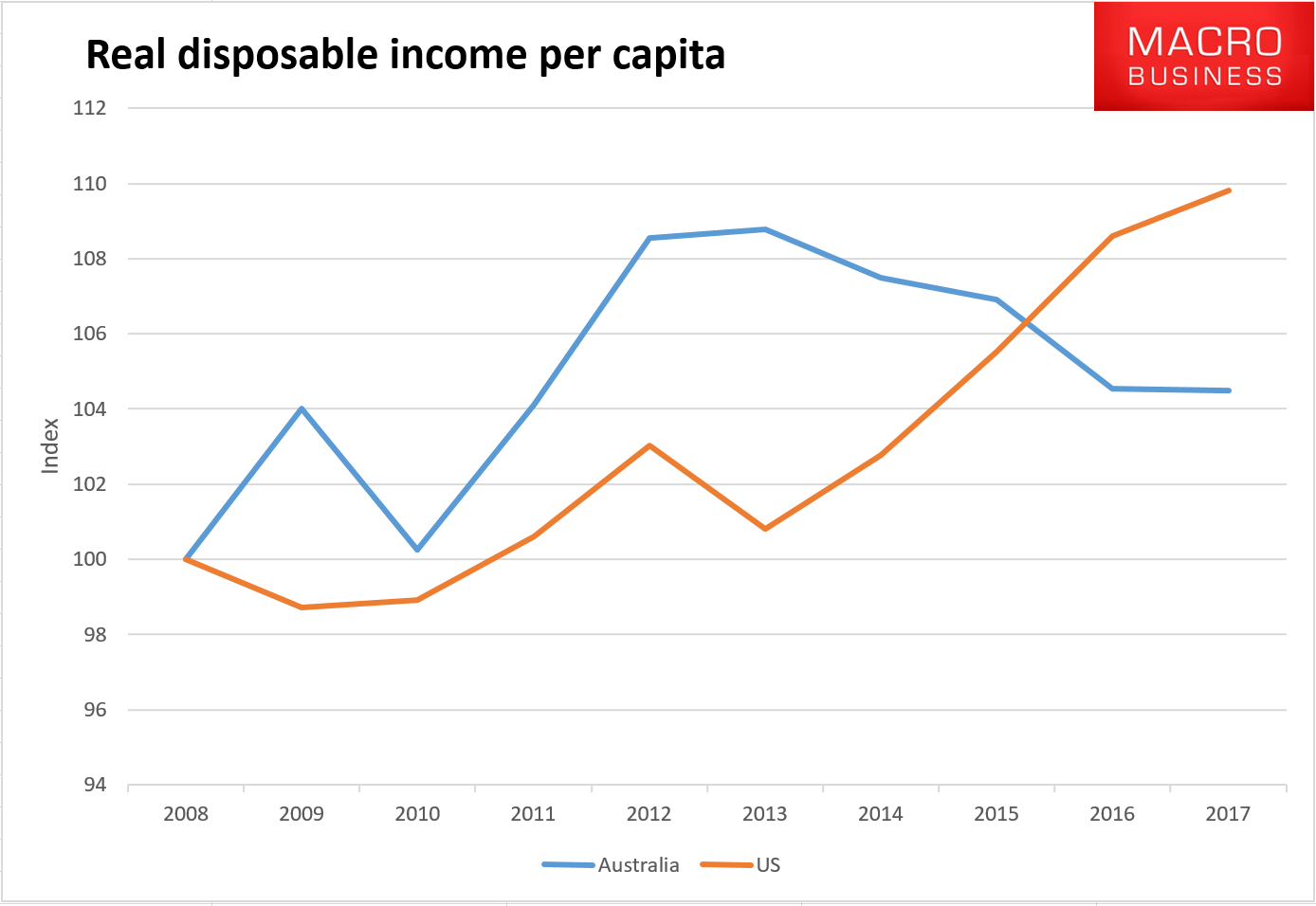Here’s Gittins, the great GDP apologist today:
One way to be a loser is not to have the wit to realise when you are winning. Being a winner but not knowing it isn’t all that gratifying.
That’s why it’s worth making a fuss about the news that, with the economy’s growth of 0.5 per cent during the three months to June, we have now completed 25 years of continuous economic growth.
This is the first time we have been able to say that since regular measurement of gross domestic product began at the end of the 1950s.
No other developed country can make the same claim over the past 25 years. Indeed, few if any have experienced such a protracted period of continuous growth at any time.
…Being Aussies, our inclination is to attribute our economic success to the good luck of China’s resources boom.
It wouldn’t occur to us that much of the credit should go to the good management of Aussie econocrats. More medals for Stevens and his immediate predecessors.
OK, Rossco, we all know Aussie authorities have mastered the art of juicing GDP. But GDP is a rubbish indicator of Australian’s well-being. How do we know? Because you told us so:
To estimate real GDP the bureau takes the nominal, dollar value of the goods and services produced, then “deflates” this figure by the prices of those goods and services relative to what those prices were in the base period.
We commonly take the value of the goods and services we produce during a period to be equivalent to the nation’s income during that period…
But [Saul] Eslake reminds us that “for an economy like Australia’s, the prices of whose exports are much more volatile than those of other ‘advanced’ economies, abstracting from swings in the prices of exports (and imports) obscures a significant source of fluctuations in real incomes”…
Trouble is, real GDP doesn’t capture the effects of these swings…
Next Eslake says that as the resources boom moves into its third and final phase – with mining investment winding down and exports ramping up – real GDP growth will be an even less useful guide to what’s happening to domestic income and employment.
This is because maybe 80 per cent of the income generated by resources exports will be paid to the foreigners…
(A separate issue Eslake doesn’t mention is that the highly capital-intensive nature of mining means the increased production of mineral exports will create far fewer jobs than you would normally expect)…
Truth is, as Rossco knows, the most widely followed measure for standards of living is not GDP, it is real disposable income per capita. To see how Australia is really faring, let’s compare that measure with the long-suffering, Great Recession afflicted and secularly stagnant US economy:

That’s right, eight years since the GFC and the horribly bogged down US economy has seen standards of living rise by roughly 5% more than Australia’s glittering GDP powerhouse (which has managed a barely visible 4% plus) and the gap is swiftly widening.
Given Australia enjoyed the largesse of the greatest mining boom in history in between we could be forgiven for concluding that Stevens, Gittins and his cohort completely butchered our China good fortune.
P.S. Seriously Rossco, it used to be challenge pulling apart your tripe. Pick up your game!

